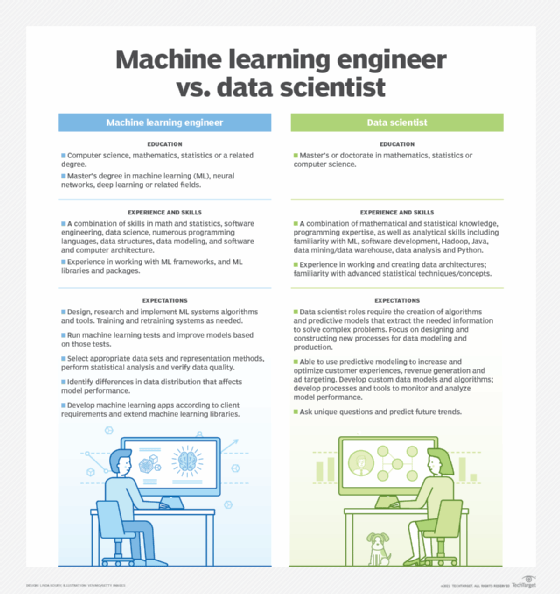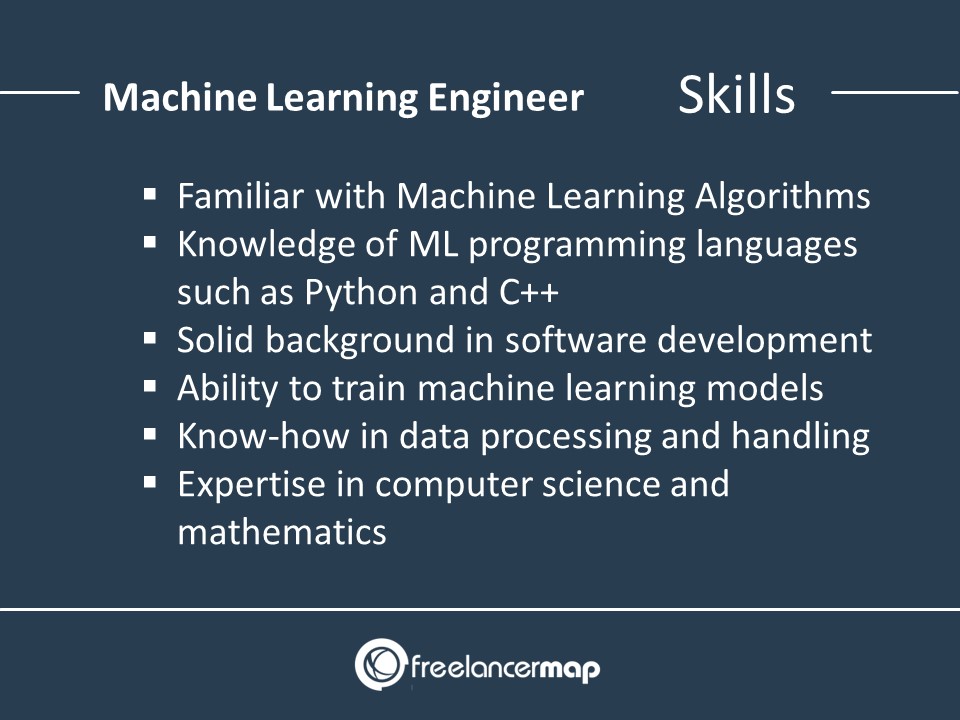All Categories
Featured
Table of Contents
On the various other hand, ML designers concentrate on structure and releasing artificial intelligence designs. They concentrate on training versions with data to make forecasts or automate jobs. While there is overlap, AI engineers deal with even more diverse AI applications, while ML designers have a narrower concentrate on maker understanding algorithms and their sensible application.
Device knowing designers focus on creating and deploying device discovering models into manufacturing systems. They service engineering, making sure designs are scalable, effective, and integrated right into applications. On the various other hand, information scientists have a wider role that consists of data collection, cleansing, expedition, and structure designs. They are commonly in charge of extracting understandings and making data-driven decisions.
As companies increasingly adopt AI and device learning modern technologies, the demand for knowledgeable professionals grows. Equipment understanding designers deal with cutting-edge tasks, add to innovation, and have affordable wages. Nevertheless, success in this area needs continuous understanding and staying up to date with evolving technologies and strategies. Artificial intelligence roles are normally well-paid, with the possibility for high making potential.
ML is essentially different from traditional software application advancement as it focuses on teaching computers to gain from data, as opposed to programming specific policies that are implemented systematically. Unpredictability of outcomes: You are most likely used to writing code with foreseeable outcomes, whether your function runs when or a thousand times. In ML, however, the results are less specific.
Pre-training and fine-tuning: Exactly how these models are educated on substantial datasets and then fine-tuned for details jobs. Applications of LLMs: Such as text generation, sentiment analysis and info search and retrieval.
The Facts About Machine Learning In Production Revealed
The capability to manage codebases, merge modifications, and solve disputes is just as vital in ML advancement as it is in typical software program tasks. The skills created in debugging and testing software applications are very transferable. While the context might alter from debugging application reasoning to determining issues in information processing or model training the underlying concepts of systematic examination, hypothesis screening, and iterative improvement coincide.
Artificial intelligence, at its core, is greatly dependent on statistics and likelihood theory. These are critical for recognizing just how formulas pick up from information, make forecasts, and assess their performance. You must take into consideration coming to be comfortable with ideas like statistical relevance, circulations, hypothesis screening, and Bayesian reasoning in order to design and interpret models efficiently.
For those curious about LLMs, a complete understanding of deep knowing styles is useful. This includes not just the mechanics of neural networks but also the style of details designs for different usage instances, like CNNs (Convolutional Neural Networks) for image handling and RNNs (Recurring Neural Networks) and transformers for sequential data and all-natural language processing.

You must understand these concerns and learn strategies for identifying, alleviating, and connecting about prejudice in ML versions. This includes the prospective impact of automated choices and the moral ramifications. Numerous versions, especially LLMs, call for significant computational resources that are commonly supplied by cloud platforms like AWS, Google Cloud, and Azure.
Building these skills will certainly not only promote a successful change into ML yet also make certain that programmers can contribute effectively and responsibly to the advancement of this dynamic area. Concept is important, but nothing defeats hands-on experience. Beginning dealing with jobs that allow you to use what you have actually discovered in a sensible context.

Construct your projects: Beginning with simple applications, such as a chatbot or a text summarization tool, and gradually boost complexity. The field of ML and LLMs is rapidly evolving, with new innovations and modern technologies arising routinely.
The smart Trick of Artificial Intelligence Software Development That Nobody is Discussing
Contribute to open-source jobs or compose blog posts concerning your learning journey and tasks. As you gain knowledge, start looking for opportunities to include ML and LLMs into your work, or look for new roles concentrated on these technologies.
Vectors, matrices, and their role in ML algorithms. Terms like design, dataset, functions, labels, training, inference, and recognition. Information collection, preprocessing methods, version training, examination processes, and implementation factors to consider.
Decision Trees and Random Forests: Intuitive and interpretable versions. Assistance Vector Machines: Maximum margin classification. Matching problem types with appropriate designs. Balancing efficiency and complexity. Basic framework of semantic networks: neurons, layers, activation functions. Split computation and onward breeding. Feedforward Networks, Convolutional Neural Networks (CNNs), Recurring Neural Networks (RNNs). Picture recognition, series forecast, and time-series evaluation.
Information circulation, change, and function engineering approaches. Scalability principles and efficiency optimization. API-driven techniques and microservices combination. Latency administration, scalability, and variation control. Continual Integration/Continuous Release (CI/CD) for ML operations. Model tracking, versioning, and performance tracking. Finding and addressing modifications in model performance over time. Resolving efficiency traffic jams and source monitoring.
The 4-Minute Rule for Software Engineering Vs Machine Learning (Updated For ...
Program OverviewMachine knowing is the future for the future generation of software specialists. This course works as an overview to equipment knowing for software program designers. You'll be presented to three of the most appropriate components of the AI/ML technique; managed knowing, neural networks, and deep knowing. You'll comprehend the differences in between traditional programs and artificial intelligence by hands-on growth in monitored knowing prior to building out complicated dispersed applications with semantic networks.
This course functions as an overview to device lear ... Program More.
The ordinary ML operations goes something such as this: You need to recognize the company trouble or goal, prior to you can attempt and resolve it with Equipment Learning. This frequently indicates study and partnership with domain degree experts to specify clear objectives and needs, as well as with cross-functional teams, consisting of data researchers, software application designers, product managers, and stakeholders.
Is this functioning? A crucial component of ML is fine-tuning designs to obtain the preferred end outcome.
This might entail containerization, API growth, and cloud release. Does it remain to work since it's real-time? At this stage, you check the efficiency of your deployed versions in real-time, recognizing and addressing concerns as they develop. This can additionally imply that you upgrade and retrain versions on a regular basis to adapt to changing data circulations or service requirements.
The Ultimate Guide To Machine Learning/ai Engineer

Equipment Learning has actually blown up over the last few years, thanks in part to breakthroughs in information storage space, collection, and calculating power. (In addition to our desire to automate all the things!). The Artificial intelligence market is projected to reach US$ 249.9 billion this year, and then remain to expand to $528.1 billion by 2030, so yeah the demand is pretty high.
That's simply one work uploading web site also, so there are also much more ML jobs out there! There's never been a better time to obtain into Equipment Discovering.
Right here's the important things, technology is one of those industries where some of the biggest and ideal people on the planet are all self taught, and some also openly oppose the idea of individuals obtaining a college level. Mark Zuckerberg, Costs Gates and Steve Jobs all left prior to they got their degrees.
Embarking On A Self-taught Machine Learning Journey Fundamentals Explained
Being self instructed really is much less of a blocker than you possibly believe. Particularly since these days, you can learn the crucial elements of what's covered in a CS level. As long as you can do the job they ask, that's all they really care about. Like any type of new skill, there's absolutely a discovering curve and it's going to really feel hard at times.
The primary differences are: It pays remarkably well to most various other occupations And there's a continuous knowing aspect What I suggest by this is that with all tech roles, you have to stay on top of your video game so that you understand the existing skills and adjustments in the sector.
Read a few blog sites and attempt a couple of devices out. Sort of simply exactly how you could discover something brand-new in your present job. A whole lot of individuals who operate in technology actually enjoy this because it suggests their work is constantly transforming slightly and they take pleasure in finding out new things. It's not as busy a modification as you might believe.
I'm mosting likely to state these skills so you have a concept of what's needed in the work. That being claimed, a great Artificial intelligence course will certainly educate you nearly all of these at the very same time, so no need to stress. Several of it may even seem challenging, however you'll see it's much less complex once you're applying the concept.
Latest Posts
Best Software Engineering Interview Prep Courses In 2025
The Best Software Engineer Interview Prep Strategy For Faang
How To Prepare For Data Engineer System Design Interviews